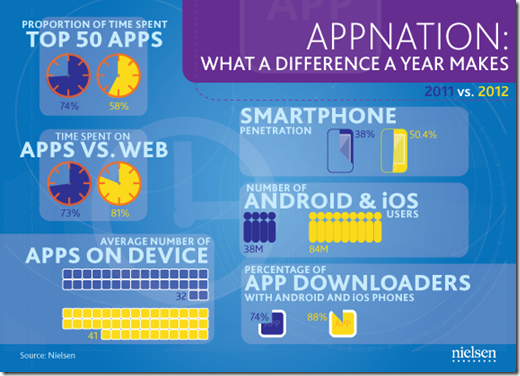Survey says…and many companies believe that moving architecture, resources or other IT infrastructure pieces to the cloud will save them money. That’s been one of the biggest selling points of cloud computing – pay as you go, metered service, pay what you use – the internet as a utility offering. And while simple deployments can be cost effective, complete architectural maneuvers often put pressure on the cloud’s main value proposition according to a recent Information Week article.
Burning through metered service when you think most everything is off can easily happen, as any of us are aware with lights, water, electricity and gas in our own homes. In the IT world, a development team may have spun up some servers for testing and forgot to decommission; another group may have commandeered some servers for a specific campaign; or, the overflow/burst/DR model went into play due to some holiday and the servers are still running well after the wrapping paper is stuffed in the garbage recycle bin. The ability for anyone with a credit card to procure cloud infrastructure services can lead to that same someone also forgetting to turn off the lights, spigot, stove and internet. We’ve all done it. And when that bill arrives, the envelope suddenly drops and the paper insert slowly floats to the floor as we attempt to understand ‘what the heck was left running!?!’
Visibility seems to be the primary culprit. As cloud providers continue to expand and grow, often their visibility into and control over usage patterns decreases. And CIOs can’t take full advantage of cloud economies since they may not know the who, what, where, when and how of the application(s) running in the cloud and thus, the overall cost implications. Cloud management tools, which are also evolving, primarily focus on provisioning, capacity, utilization and workflows but not always the total cost of ownership. Most organizations are not even fully aware of the costs until that big envelope arrives and they might not deal with or have a plan for ‘overages’ until it happens. In addition, as more companies look to the cloud for business continuity/disaster recovery scenarios, as the recent disaster planning study from AT&T suggests, those ‘deer in the headlights’ gazes may become more common.
According to the article, these four situations account for cloud's most common hidden costs:
1. Runaway VMs: One of the key tenets of the cloud is self-service, making it easy for users to gain access to compute power wherever and whenever they need it. Often what happens, though, is users are so empowered to spin up compute resources that they overprovision or go over budget because there are no guidelines or caps in place to limit their usage.
2. Zombie VMs: This is something referred to as the "living dead" concept. Think back to the group of developers who spun up a bunch of clouds for load testing, which they never brought down, or even a handful of licenses for a software-as-a-service (SaaS) application purchased on credit cards by a lone business group, which after a period of brief usage lies dormant. While individually these expenses may not account for much, cumulatively they can add up, especially if there's no visibility for tracking, and months, even years, go by without turning off the spigot.
3. Choosing the wrong pricing model: Cloud providers price their services differently and often, the costs are a moving target. Many organizations will opt for more expensive on-demand pricing because they don't want to make a long-term commitment to the provider, but they do so without having the proper context.
4. Maintenance costs: A move to the cloud means support and maintenance comes off of IT's plate. Well, that's the idea, but not necessarily the reality. Also, all of the groups that have tapped cloud resources on their own (so-called shadow IT) come calling on IT, not the support folks at the Amazon cloud, when something goes wrong.
At one point or another, we all have forgotten to turn off a light, the water, a heater, the AC or any other item that uses the traditional utilities. The new Smart meter Edison installed on the side of my house is supposed to give me visibility into my usage for proper cost analysis. Organizations need something similar as part of the cloud management tools to give them the ability to properly plan if and when sticker shock hits their system.
ps
References:
| Connect with Peter: | Connect with F5: |
![o_linkedin[1] o_linkedin[1]](https://devcentral.f5.com/weblogs/images/devcentral_f5_com/weblogs/macvittie/1086440/o_linkedin.png) ![o_rss[1] o_rss[1]](https://devcentral.f5.com/weblogs/images/devcentral_f5_com/weblogs/macvittie/1086440/o_rss.png) ![o_facebook[1] o_facebook[1]](https://devcentral.f5.com/weblogs/images/devcentral_f5_com/weblogs/macvittie/1086440/o_facebook.png) ![o_twitter[1] o_twitter[1]](https://devcentral.f5.com/weblogs/images/devcentral_f5_com/weblogs/macvittie/1086440/o_twitter.png) | ![o_facebook[1] o_facebook[1]](https://devcentral.f5.com/weblogs/images/devcentral_f5_com/weblogs/macvittie/1086440/o_facebook.png) ![o_twitter[1] o_twitter[1]](https://devcentral.f5.com/weblogs/images/devcentral_f5_com/weblogs/macvittie/1086440/o_twitter.png) ![o_slideshare[1] o_slideshare[1]](https://devcentral.f5.com/weblogs/images/devcentral_f5_com/weblogs/macvittie/1086440/o_slideshare.png) ![o_youtube[1] o_youtube[1]](https://devcentral.f5.com/weblogs/images/devcentral_f5_com/weblogs/macvittie/1086440/o_youtube.png) |





